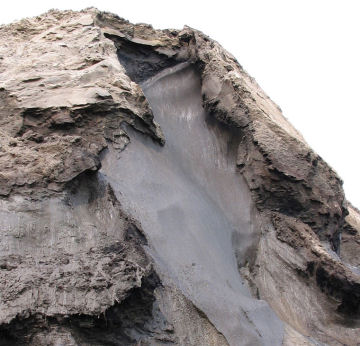Barely Alive: Ancient bacteria survive in the slow lane
Microbes in 500,000-year-old permafrost breathe, although at a very slow pace, and show other signs of life, according to a new report. If confirmed, the findings would be the first evidence of metabolism remaining active over geologic time scales.

Previously, researchers had extracted bacteria from 250 million-year-old minerals and coaxed them to grow in the lab. Such bacteria probably survived in a dormant, sporelike state (SN: 6/12/99, p. 373).
The new report hints that some types of bacteria instead remain metabolically active over hundreds of thousands of years. “Our evidence suggests there are some living bacteria [in the permafrost],” says lead researcher Eske Willerslev of the University of Copenhagen. “But there is definitely a time limit to how long they can live.”
The researchers found evidence of viable bacteria in samples of Canadian and Siberian permafrost ranging from 7,000 to 500,000 years old, but they saw no such signs in cores older than that, they report in the Sept. 4 Proceedings of the National Academy of Sciences.
Willerslev’s multinational team used two techniques to detect signs of life. Both methods showed declining evidence of viable bacteria in progressively older samples.
To detect respiration, a hallmark of active metabolism, the researchers looked for carbon dioxide emissions from permafrost samples. They first sealed the samples in airtight chambers for 3 months to allow trapped atmospheric gases to dissipate. Throughout the following 6 months, they measured minute but steady carbon dioxide emissions from 25,000-year-old and 500,000-year-old samples. Tests detected no such gas from 740,000-year-old permafrost. The team says that its laboratory setup eliminated any incidental sources of carbon dioxide, such as plastic tubing, leaving live bacteria as the only source of the gas.
In the second test, Willerslev’s team searched for a segment of DNA, 4,000 base pairs long, variations of which occur in all bacteria. In the youngest samples, the researchers found many variants of this marker, indicating that the ice was teeming with bacteria of many species. The oldest samples, by contrast, yielded just a few copies. “That’s a hard pattern to explain by contamination,” Willerslev points out.
The presence of these stretches of DNA, which are much longer than snippets typically found in ancient cells, suggests that the microbes were continuously repairing DNA damage, says Willerslev.
Russell H. Vreeland of West Chester (Pa.) University says that finding such long stretches of DNA is impressive. However, he doubts that it proves long-term DNA-repair activity. It’s possible, Vreeland suggests, that the DNA never degraded in the first place. Scientists disagree over the extent to which DNA decays over millennia and longer periods.
“I’m caught between the fact that I believe there are viable organisms in the [permafrost], but I don’t believe that this data shows it,” says Vreeland.
Willerslev asserts that future missions to Mars should search for bacteria in that planet’s permafrost. “If there had been a similar bacterial community on Mars, you can push their survival time way back now,” he says.